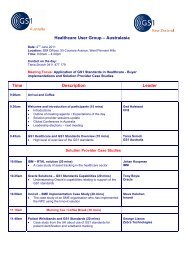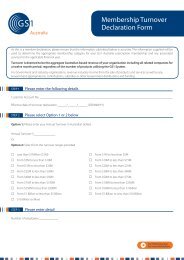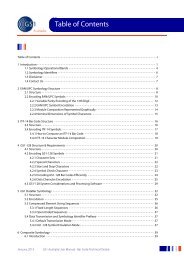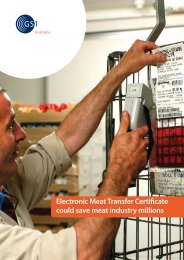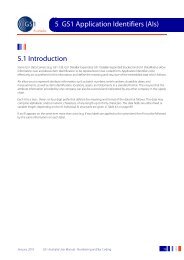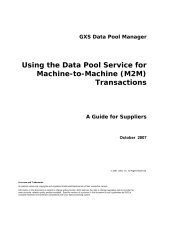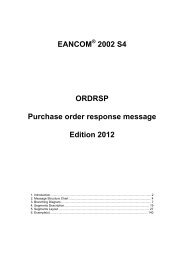You also want an ePaper? Increase the reach of your titles
YUMPU automatically turns print PDFs into web optimized ePapers that Google loves.
Cost Implications<br />
of Bad Product <strong>Data</strong><br />
9<br />
In order to understand the impact of bad product data,<br />
<strong>GS1</strong> <strong>Australia</strong> discussed the findings of the survey with<br />
representatives of large retailers and suppliers. The<br />
most likely cost implications of the data misalignment<br />
highlighted in the study fall into three main groups:<br />
1. Manual Workarounds 4%<br />
2. Administrative Shrinkage 31%<br />
3. Lost Consumer Sales 65%<br />
Manual Workarounds<br />
Invoice and Order Reconciliation<br />
Any mismatch between the goods supplied and the original<br />
purchase order significantly affects the supply chain. At the<br />
very least, the goods are held up until the issue is resolved<br />
leading to stores being out of stock.<br />
Depending on the variations, the receiver of the goods<br />
could return the goods entirely or, having made appropriate<br />
investigations, re-issue the purchase order so it matches the<br />
despatch advice. In some cases the truck will be kept waiting<br />
while investigations take place, causing a ripple effect through<br />
other suppliers and transport firms as strict delivery schedules<br />
are pushed out.<br />
If the goods are accepted, it can take months to reconcile the<br />
differences, leading to payment delays, customers being put<br />
on credit hold and finance issues.<br />
It is estimated these issues will cost the <strong>Australia</strong>n grocery<br />
industry around $31 million over the next five years based<br />
on current data inaccuracies.<br />
At every stage of a product’s journey through the supply<br />
chain, data is required to identify, process, handle, route and<br />
re-route these items successfully. Manual workarounds may<br />
be categorised into two major areas of cost implication:<br />
1. Invoice and Order Reconciliation<br />
2. Manual <strong>Data</strong> Entry and Workarounds<br />
Manual <strong>Data</strong> Entry and Workarounds<br />
The <strong>Australia</strong>n grocery retail sector is a low-margin, high-volume<br />
industry characterised by a relatively small market, large<br />
distances and low-growth population. Retailers have focused<br />
on taking costs out of their supply lines by taking greater<br />
direct control of product movements and economies in<br />
logistics.<br />
Significant investments in technology such as bar coding,<br />
electronic messaging and data synchronisation have helped<br />
increase automation reducing manual handling and supply<br />
chain costs significantly.<br />
When these processes, which rely heavily on the underpinning<br />
data, are subjected to inaccuracies, the whole system slows<br />
down and becomes extremely inefficient.<br />
When bar codes are keyed in, rather than scanned, when<br />
messages fail because the item code is wrong, the price<br />
differs from what was agreed or the carton quantities vary,<br />
the supply chain ceases to operate properly.






